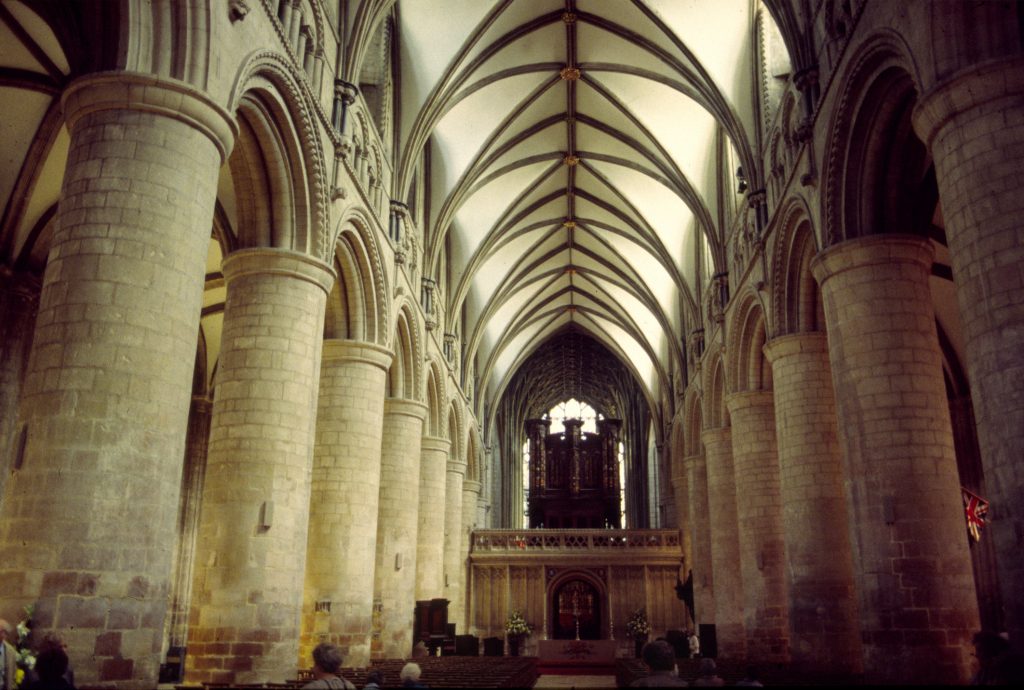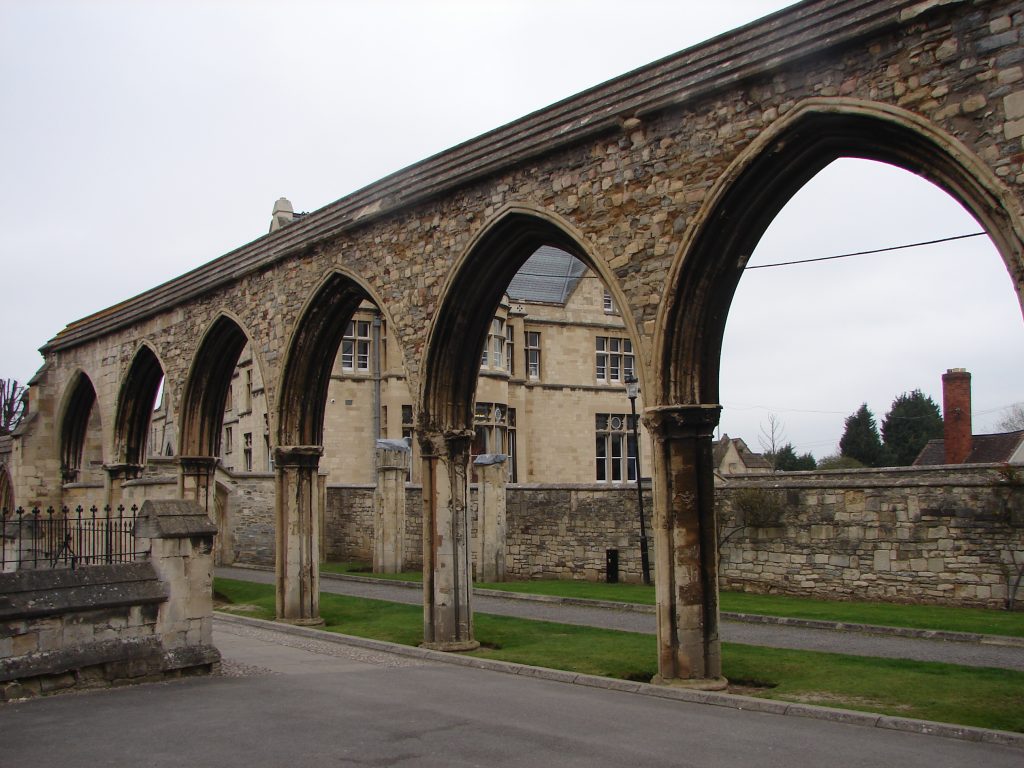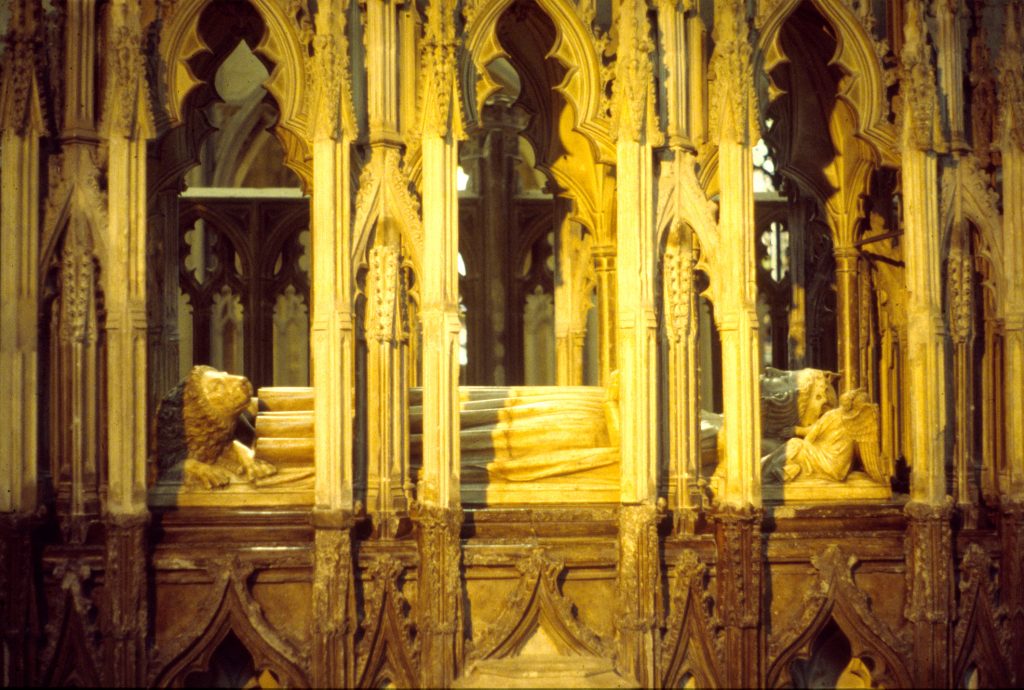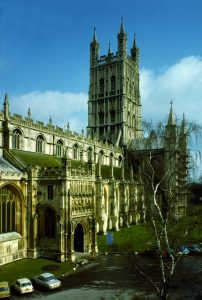 In this blog, I am discussing the medieval church as found in Memento Mori, the third book in my West Country Medieval Mystery Series featuring my heroine, the Lady Apollonia of Aust. I have begun with medieval cathedral churches and focused last month on Exeter Cathedral in Devon. This month I will speak of Gloucester Cathedral, shown in the picture on the left. Unlike Worcester Cathedral and Exeter Cathedral, Gloucester Cathedral was not yet a cathedral church in 1392 when Memento Mori was set; instead, it was the church of the Abbey of St. Peter in Gloucester and was an important abbey church when Memento Mori was set.
In this blog, I am discussing the medieval church as found in Memento Mori, the third book in my West Country Medieval Mystery Series featuring my heroine, the Lady Apollonia of Aust. I have begun with medieval cathedral churches and focused last month on Exeter Cathedral in Devon. This month I will speak of Gloucester Cathedral, shown in the picture on the left. Unlike Worcester Cathedral and Exeter Cathedral, Gloucester Cathedral was not yet a cathedral church in 1392 when Memento Mori was set; instead, it was the church of the Abbey of St. Peter in Gloucester and was an important abbey church when Memento Mori was set.
The church didn’t become a cathedral until 1536 when King Henry VIII dissolved the abbey, carved a new Diocese of Gloucester out of the Diocese of Worcester, and made the abbot of the former Abbey of St. Peter the bishop of the new diocese. The great church in Gloucester is among several monastic churches that became Cathedrals of the New Foundation at the time of King Henry VIII.
The abbey was an ancient foundation, first founded in 679 as a minster by Osric and became Benedictine at the beginning of the 11th century. For a short time, it struggled and shrunk to just two monks but was important enough by 1085 that William the Conqueror held his Christmas Court in its chapter house. That was when he ordered the creation of his Domesday Book. Another king, Henry III, was crowned in the abbey church in 1216.
The nave is from the Norman period with the Norman quire upgraded to the Gothic style before the story within Memento Mori takes place. The picture below shows the Norman nave as it looks today. The vault you see in the picture below was added in the 13th century to the nave, built in the early 12th century, so this is much how the nave would have looked when Lady Apollonia visited the church in my story.
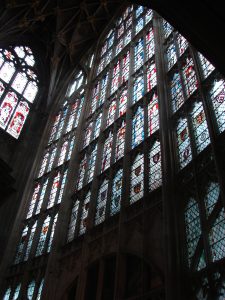 The upgraded Gothic quire includes an extraordinary east window, so large that it competes with the east window of York Minster for the largest stained-glass window in England. The picture on the left shows it as my heroine might have viewed it on her way to visit the tomb of King Edward II which is located on the north quire aisle. That tomb itself is pictured at the end of this posting. King Edward II died, possibly murdered, in nearby Berkeley Castle. His son King Edward III provided substantial funds for the conversion of the quire in Gloucester’s abbey church from its Norman architecture to the Gothic, a grand place to house the tomb of his father.
The upgraded Gothic quire includes an extraordinary east window, so large that it competes with the east window of York Minster for the largest stained-glass window in England. The picture on the left shows it as my heroine might have viewed it on her way to visit the tomb of King Edward II which is located on the north quire aisle. That tomb itself is pictured at the end of this posting. King Edward II died, possibly murdered, in nearby Berkeley Castle. His son King Edward III provided substantial funds for the conversion of the quire in Gloucester’s abbey church from its Norman architecture to the Gothic, a grand place to house the tomb of his father.
The Abbey of St. Peter plays other roles in my story. The monastery had many other buildings and the infirmary, for example, plays a major part in my story. Unlike the church which survives today as Gloucester Cathedral, some of these buildings have survived only as ruins. The arcade, shown below, is all that is left of the infirmary. I encourage you to read Memento Mori to see how I use the infirmary in the story.
I hope to have you check in again next month so that we can continue our discussions of Fourteenth Century England and the adventures of the Lady Apolonia of Aust.
